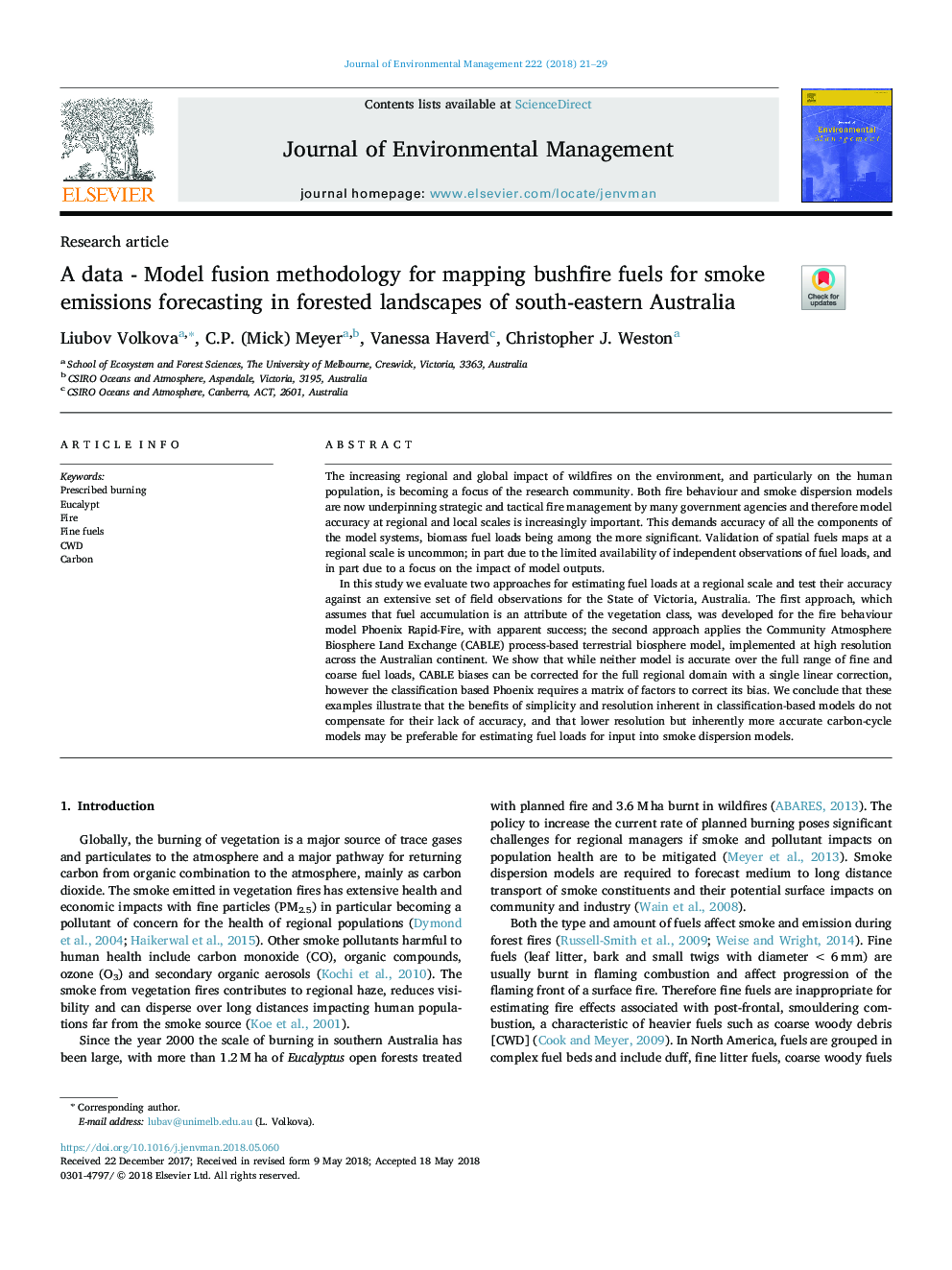| Article ID | Journal | Published Year | Pages | File Type |
|---|---|---|---|---|
| 7475874 | Journal of Environmental Management | 2018 | 9 Pages |
Abstract
In this study we evaluate two approaches for estimating fuel loads at a regional scale and test their accuracy against an extensive set of field observations for the State of Victoria, Australia. The first approach, which assumes that fuel accumulation is an attribute of the vegetation class, was developed for the fire behaviour model Phoenix Rapid-Fire, with apparent success; the second approach applies the Community Atmosphere Biosphere Land Exchange (CABLE) process-based terrestrial biosphere model, implemented at high resolution across the Australian continent. We show that while neither model is accurate over the full range of fine and coarse fuel loads, CABLE biases can be corrected for the full regional domain with a single linear correction, however the classification based Phoenix requires a matrix of factors to correct its bias. We conclude that these examples illustrate that the benefits of simplicity and resolution inherent in classification-based models do not compensate for their lack of accuracy, and that lower resolution but inherently more accurate carbon-cycle models may be preferable for estimating fuel loads for input into smoke dispersion models.
Related Topics
Physical Sciences and Engineering
Energy
Renewable Energy, Sustainability and the Environment
Authors
Liubov Volkova, C.P. (Mick) Meyer, Vanessa Haverd, Christopher J. Weston,
